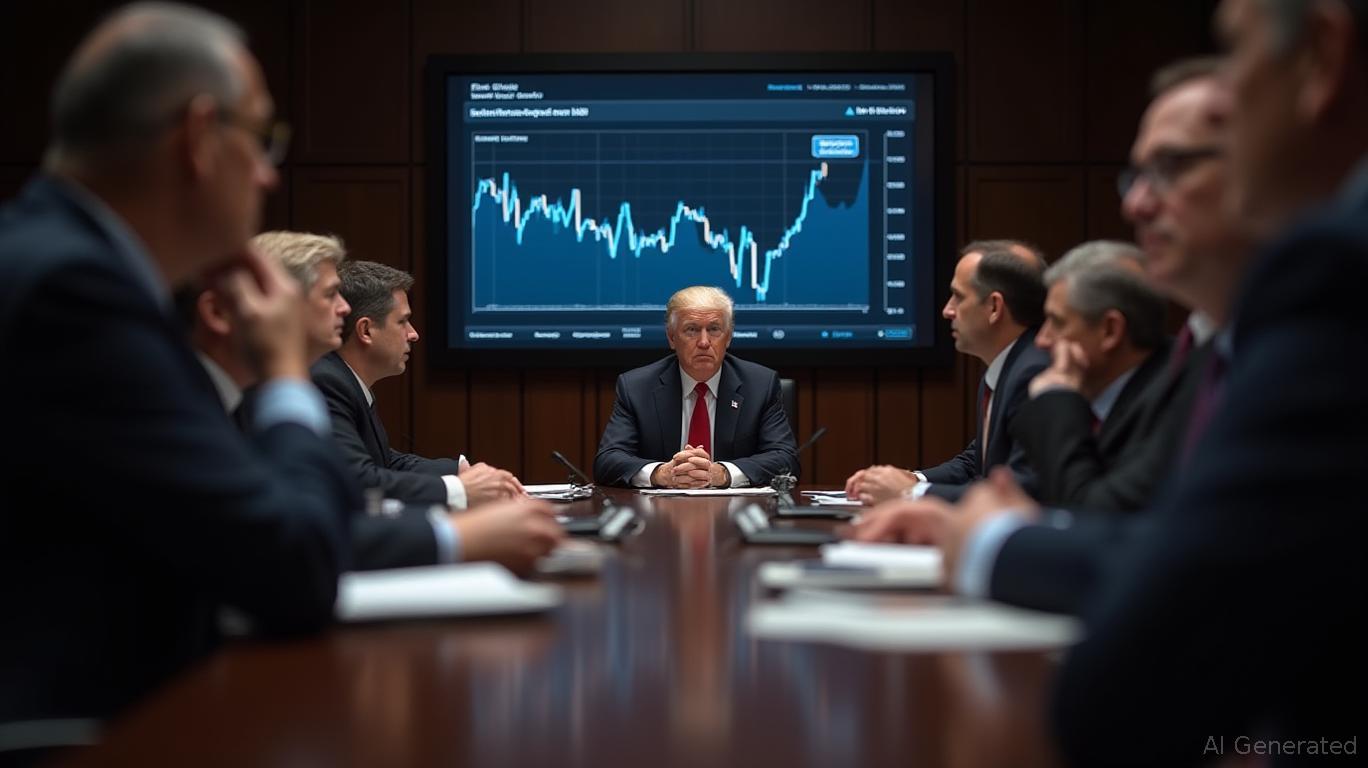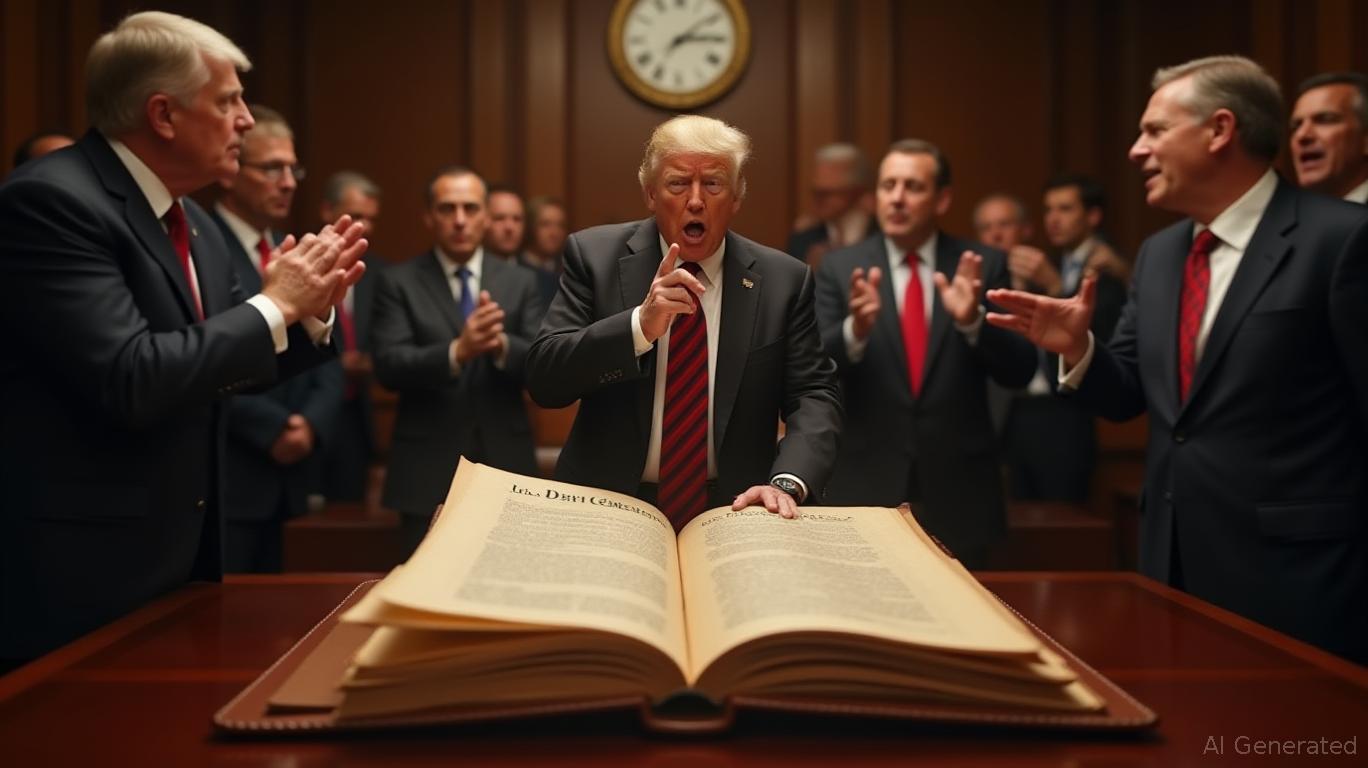Fed Lowers Interest Rates as Data Remain Unclear Due to Shutdown, While Focus Shifts to Tech AI Profits and Trade Agreement
- The U.S. Fed cuts rates by 25 bps for the second consecutive meeting, signaling potential policy easing amid a government shutdown and global trade tensions. - Big Tech earnings spotlight AI monetization, with Microsoft's Azure and Amazon's AWS under scrutiny as $420B AI spending by 2026 drives growth but risks margin pressures. - A preliminary U.S.-China trade deal delays Trump's 100% tariffs and resumes soybean purchases, marking de-escalation after months of escalating tensions. - Fed's rate cut coinc
The U.S. Federal Reserve is on track to lower interest rates for the second meeting in a row, suggesting a possible change in monetary policy as markets prepare for a crucial week filled with major corporate earnings and important diplomatic events. The Fed is widely anticipated to cut its benchmark rate by 25 basis points this Wednesday, and investors are paying close attention to how the central bank manages an uncertain economic environment shaped by a government shutdown and ongoing international trade disputes, according to a

At the same time, Wall Street's attention shifts to leading technology firms, with
This week’s most significant development could be the meeting between Trump and Xi at the APEC summit in South Korea. Following months of rising trade friction, the U.S. and China have reportedly reached a tentative deal to postpone Trump’s proposed 100% tariffs on Chinese imports and to halt new restrictions on rare earth exports, according to a
The anticipated Fed rate cut is also likely to mark the conclusion of quantitative tightening, as officials weigh reinvesting maturing assets to help steady the 10-year Treasury yield, according to Investors.com. However, the ongoing government shutdown has left the economic calendar thin, making it harder to assess the state of the job market. With unemployment worries lingering, the possibility of another rate cut in December remains a key topic for investors, as highlighted in Morningstar’s outlook.
Throughout the week, market participants will analyze earnings releases for evidence of progress in monetizing AI. Google's AI Overviews and Meta’s expensive AI initiatives are under the microscope, while Apple’s upcoming iPhone 17 could provide a short-term boost in sales, according to the Investors.com preview. So far, the Magnificent Seven’s steady record of beating earnings forecasts has fueled a three-year rally, but analysts warn that slower profit growth—expected to reach 14% in the third quarter—may challenge investor optimism, as reported by a
Disclaimer: The content of this article solely reflects the author's opinion and does not represent the platform in any capacity. This article is not intended to serve as a reference for making investment decisions.
You may also like
Solana News Today: Solana's Tightrope Walk: ETF Investments, Price Fluctuations, and Regulatory Challenges
- Solana attracts institutional investors via ETF inflows, Hong Kong regulatory approvals, and the Alpenglow upgrade targeting validator cost cuts. - SSK ETF sees $24M weekly inflows, while Hong Kong's first Solana ETF launches October 27, expanding global institutional access. - SOL price rebounds to $195 but faces $200 resistance; analysts highlight $220 as a key breakout threshold for further gains. - Alpenglow aims to slash 80% of validator fees by 2026, enhancing decentralization through lower entry b

Political Stalemate to Drive U.S. Debt Higher Than Italy and Greece by 2030
- U.S. public debt-to-GDP ratio will surpass Italy and Greece by 2030, per IMF forecasts, reaching 143% vs. 137% and 130%. - Trump-era tax cuts, $1T defense spending, and political gridlock drove deficits above 7% of GDP since 2025. - Italy/Greece reduced deficits via austerity and EU funds, while U.S. faces debt servicing costs exceeding education/transport budgets. - Analysts warn U.S. debt path is unsustainable without structural reforms, as political stalemate blocks spending cuts or tax hikes.

China's approach with the Digital Yuan seeks to transform the landscape of international finance
- PBOC establishes Beijing and Shanghai centers to advance digital yuan strategy, enhancing domestic infrastructure and global reach. - Digital yuan pilot transactions exceed 14.2 trillion yuan, supported by 225 million wallets, while PBOC enforces crypto bans to mitigate risks. - Dual-center model balances domestic innovation with international collaboration, expanding digital yuan adoption through commercial banks. - China’s strategy aims to reshape global CBDC perceptions, leveraging regulatory rigor an

U.S. Bets $40 Billion on Argentina's Economic Reforms as Peso Rallies and Poverty Rises
- Trump praised Argentina's Milei for a landslide election win, linking it to U.S. financial gains amid a 6% peso surge against the dollar. - U.S. Treasury's $20B currency swap and $40B total stake aim to stabilize Argentina's economy, despite 53% poverty rates and political instability risks. - Milei's austerity reforms face challenges: poverty deepening, congressional alliances needed, and potential peso collapse if reforms stall. - Markets reacted positively to the election, with Argentine bonds and sto
